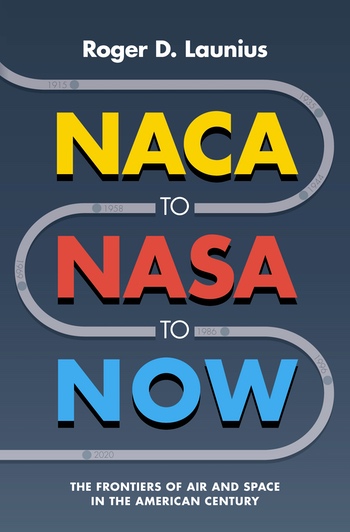 |
Review: NACA to NASA to Now
by Jeff Foust
Monday, March 20, 2023
NACA to NASA to Now: The Frontiers of Air and Space in the American Century
by Roger Launius
NASA, 2023
ebook, 292 pp., illus.
free
There is no shortage of histories of NASA. Some are high-level overviews of NASA’s activities since the start of the Space Age in the 1950s, while others dive deep into specific programs, missions, or careers. Do we really need another overview of the agency?
Maybe. While it may not be obvious from the title, NACA to NASA to Now, recently published by NASA’s history office, is a concise yet comprehensive overview of NASA and its predecessor, the National Advisory Committee for Aeronautics (NACA). Roger Launius, former NASA chief historian, is able to condense more than a century of activities into less than 300 pages.
As one would imagine, there are limits to the amount of detail one can offer in such a book: there is no mission-by-mission recounting of the shuttle program, for example. It instead gets one chapter of less than 25 pages, but one that discusses the origins, evolution, and ultimate end of the program, including its major milestones and accidents, as well as related topics like the creation of a larger, more diverse astronaut corps.
| Launius is able to condense more than a century of activities into less than 300 pages. |
The first part of the book is roughly chronological, starting with the origins of the NACA in 1915 as a response to World War I and concerns that the United States was behind in the development of aviation technologies. (Launius notes that while the space agency is known simply as NASA, its predecessor was always “the N-A-C-A”, with the definite article and the letters spelled out rather than pronounced.) It follows the growth of the NACA through the two world wars and development of supersonic flight, to its transformation to NASA in 1958. The NASA portions of the book are more thematic, with individual chapters on the race to the Moon, the shuttle, space stations, science, and its continued work in aeronautics. The book’s final chapter looks at NASA’s embrace of commercialization, particularly with commercial cargo and crew.
In the epilogue, Launius notes he often is asked to name the biggest accomplishments of NASA and the NACA. Apollo 11 is at the top of the list, of course, but he offers a mix of others (which he calls his favorite landings) that include the first and last shuttle missions, all the Mars missions, but also airplanes that have landed safely despite wind shear and icing, thanks to NASA/NACA aeronautics research. It’s a reminder of what those paired organizations have accomplished in air and space over more than a century, a legacy NASA seeks to build upon from Artemis to aeronautics.
No comments:
Post a Comment